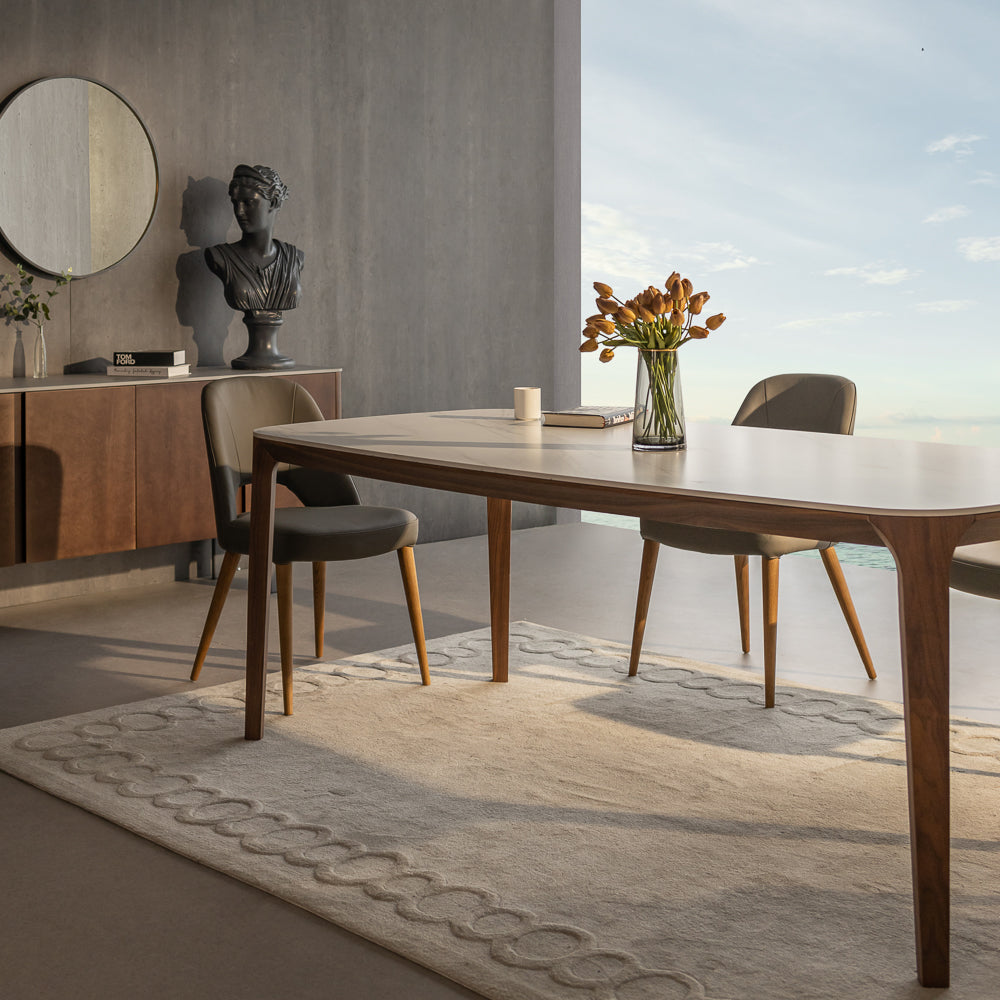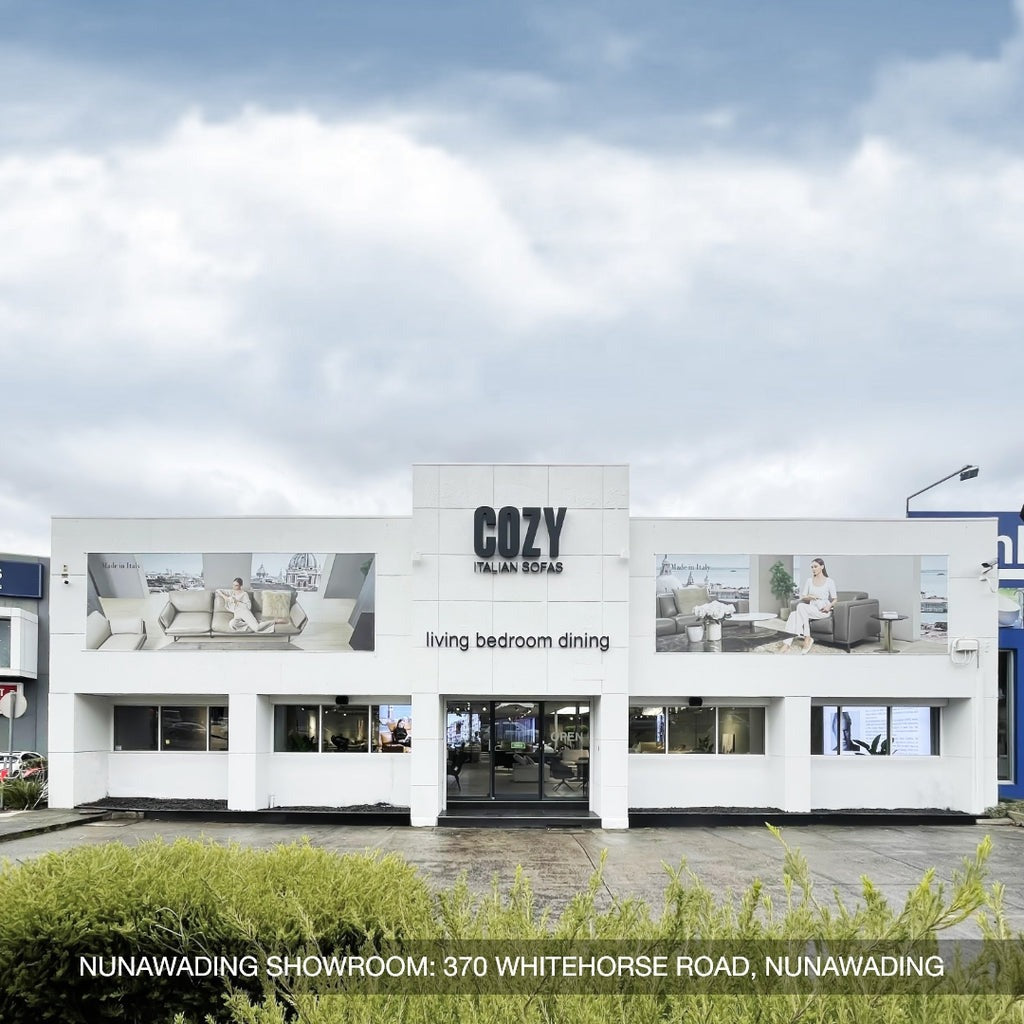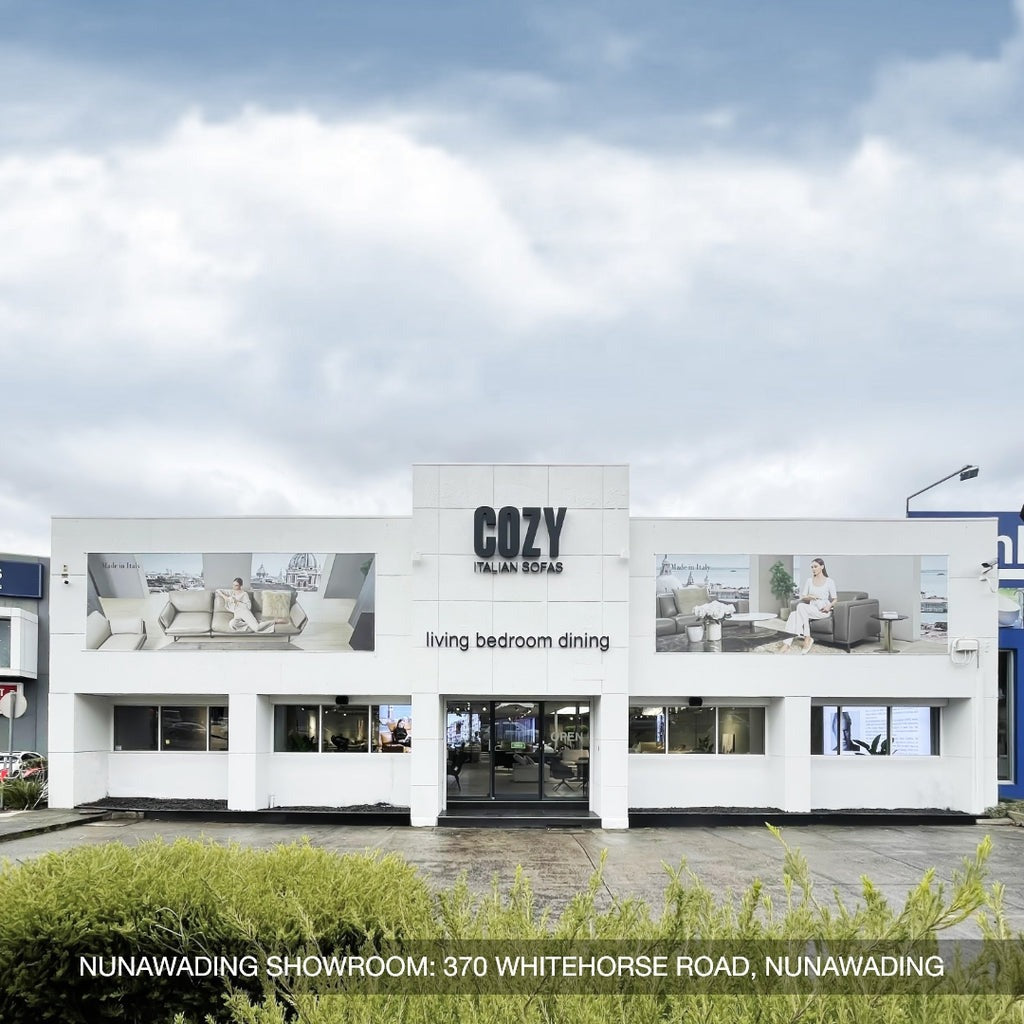The journey of selecting the ideal dining table involves navigating a myriad of choices, and a crucial decision lies in determining the material that best suits your needs. The debate between sintered stone vs ceramic dining table unfolds a nuanced exploration of two distinct yet popular options.
Understanding the differences between sintered stone vs ceramic dining tables becomes pivotal in making an informed choice that aligns with both aesthetic preferences and practical considerations. Let's delve into this comparative analysis to unravel the unique characteristics and advantages each material brings to the dining table, shedding light on the ongoing dilemma: Which is truly the superior choice?
Definition Of Sintered Stone Dining Table
A sintered stone dining table, a composite crafted from natural minerals and pigments, undergoes compression and high-temperature heating. This results in a dense, resilient material resistant to scratches, stains, and heat. Available in an expansive array of colors, patterns, and finishes, these tables feature a smooth, polished surface, ensuring easy maintenance. Notably lightweight compared to alternative materials, they offer both aesthetic versatility and practical convenience.

A sintered stone dining table is a composite made from natural minerals and pigments.
Definition Of Ceramic Dining Table
A ceramic dining table is crafted from a blend of clay, minerals, and water. The formation of the table involves molding the mixture into the desired shape before subjecting it to high-temperature kiln firing for hardening.

Ceramic dining tables come in various colors, patterns, and finishes, offering limitless options.
Ceramic dining tables boast an extensive array of colors, patterns, and finishes, offering virtually limitless options. Whether adorned with a glossy or matte finish, these tables exhibit a distinct weightiness compared to alternatives. Beyond their heft, ceramic dining tables present a unique texture, contributing to a natural appearance and tactile feel. In the realm of ceramic vs marble dining table, the former stands out for its diverse aesthetics and distinctive craftsmanship, making it a sophisticated choice for upscale dining spaces.
Different Between Sintered Stone Vs Ceramic Dining Table
Characteristics
Characteristics
The choice between sintered stone vs ceramic dining table materials involves a detailed consideration of several key factors. In terms of characteristics, a sintered stone dining table is a composite material created through compression and high-temperature heating of natural minerals and pigments. On the other hand, a ceramic dining table is made from a mixture of clay, minerals, and water, molded into shape and fired at high temperatures in a kiln. While both materials boast unique features, sintered stone tends to offer a denser composition, resulting in a material that is often even more resistant to scratches, stains, and heat.
Durability And Longevity
Durability and longevity play a crucial role in deciding between sintered stone and ceramic dining tables. Sintered stone's high-density composition lends itself to exceptional durability, making it highly resistant to wear and tear over time. Ceramic dining tables, while sturdy, may be more susceptible to chipping or cracking under certain conditions.
Maintenance And Cleaning
When it comes to maintenance and cleaning, both materials have their advantages. Sintered stone's smooth and polished surface makes it easy to clean, and it is less porous than ceramic, reducing the likelihood of stains. Ceramic, while also relatively low-maintenance, may require additional care to prevent staining in the long run.
Aesthetics And Design
Aesthetics and design considerations are paramount in the decision-making process. Sintered stone dining tables often provide a sleek and modern appearance, with a range of colors and patterns to choose from. Ceramic dining tables, on the other hand, offer a unique texture that provides a more natural and earthy aesthetic. The choice between sintered stone vs ceramic dining table can be guided by personal taste and the desired ambiance for the dining space.

Sintered stone tables often embody a sleek and modern appearance, offering a variety of colors and patterns for a contemporary feel.
Cost Considerations
Cost considerations also come into play when deciding between these materials. Sintered stone is typically considered a premium material, and as such, it often comes with a higher price tag compared to ceramic dining tables. Assessing the budget constraints alongside the desired qualities of the dining table is crucial in making an informed decision.
Environmental Impact
Environmental impact is an increasingly important factor in material choices. Sintered stone is often considered more environmentally friendly than ceramic due to its composition of natural minerals. Sintered stone manufacturing processes can be more efficient, with some products incorporating recycled content. On the other hand, ceramic production involves firing clay in kilns, which can have higher energy consumption. Considering the environmental impact of the chosen dining table material aligns with a growing consciousness toward sustainable and eco-friendly choices in home design.
4 Elegant Ceramic Dining Tables At COZY
Newport
Newport
The Newport Ceramic Extendable Dining Table boasts an elegant, long design suitable for spacious settings. Its 12mm Italian porcelain ceramic top is durable, non-porous, and heat-resistant up to 1200°C, making it ideal for gatherings. The smart design allows expansion from 2 to 3 sizes, the largest being 2.9m, complemented by 12 chairs. The powder-coated iron leg frame ensures anti-rust properties, easy transportation, and assembly. With a sophisticated sanded black metal base, this exclusive modern design is available only at COZY, providing a perfect blend of style and functionality for your dining space.

The Newport Ceramic Extendable Dining Table exudes elegance with its long design, perfect for spacious settings.
Orleans
The Orleans Ceramic Extendable Dining Table stands out as an exquisite Italian porcelain masterpiece. Its high-quality ceramic coating, heat-resistant up to 1200 degrees Celsius, is waterproof, scratch-resistant, and boasts three times the glossiness of regular ceramic. The intelligent design allows extension into three sizes, reaching a maximum length of 2.7m. The iron frame system, powder-coated in light grey to prevent corrosion, can be effortlessly dismantled and reassembled. Ideal for 8 to 10 seats, especially paired with York or Dundee seats, this table seamlessly combines aesthetics with practicality, enhancing your dining space with elegance and functionality.
Vienna
The Vienna Ceramic Extendable Dining Table epitomizes luxurious modern design, perfect for expansive spaces. Crafted from high-class porcelain Italian ceramic coating, it boasts moisture-proof and scratch-resistant qualities. The smart design allows for a 0.45m expansion from 2 table tops, forming 3 different sizes, reaching a maximum length of 2.9m, complemented by 12 chairs. The table leg frame system, constructed with powder-coated iron, is both anti-rust and removable, facilitating convenient transportation and assembly. With a harmonious blend of elegance and practicality, the Vienna table elevates your dining experience in both style and functionality.

The Vienna Ceramic Extendable Dining Table embodies luxurious modern design, ideal for expansive spaces.
Windsor
The Windsor Large Ceramic Dining Table combines contemporary Italian design with functionality, offering comfort in both medium and large spaces. Crafted from high-quality Italian Porcelain Ceramic, it excels in durability, high-temperature resistance, moisture-proof and scratch-resistant properties, all lacquer-coated for added protection. The minimalist design, extending to 200cm in length, comfortably accommodates 6-8 dining chairs. The table's leg frame, constructed from solid wood with a warm walnut veneer, adds a touch of natural elegance. With its blend of distinctive style and comfort, the Windsor table becomes a focal point, seamlessly merging aesthetics with practicality in your dining space.

With its blend of distinctive style and comfort, the Windsor table becomes a focal point, seamlessly merging aesthetics with practicality in your dining space.
FAQs
Which Is The Superior Choice, Ceramic Or Sintered Stone?
Which Is The Superior Choice, Ceramic Or Sintered Stone?
The choice between ceramic and sintered stone depends on individual preferences and priorities. Ceramic offers versatility in design, a wide range of options, and is generally more budget-friendly. It suits those who prioritize traditional aesthetics and cost considerations. On the other hand, sintered stone presents a modern, sleek appearance with superior durability, resistance to scratches, stains, and heat. It's ideal for those seeking a premium, long-lasting material and are willing to invest in a higher-end option. Ultimately, the superior choice hinges on factors such as budget, design preferences, and the desired level of durability for the specific application.
Is It Possible To Mend A Ceramic Or Sintered Stone Table That Has Chips Or Cracks?
Mending chips or cracks in a ceramic or sintered stone table is challenging but possible. For ceramic tables, epoxy or resin can be used to fill small cracks, while larger damage may require professional repair or replacement. Sintered stone, being denser, is more resistant but not immune to damage. Epoxy or specialized repair kits may help conceal minor flaws. However, for significant damage, consulting a professional or considering replacement might be the best solution. Prevention through careful use and maintenance is crucial to prolong the lifespan of both ceramic and sintered stone tables.
Are Ceramic And Sintered Stone Tables Appropriate For Outdoor Applications?
Ceramic and sintered stone tables can be suitable for outdoor applications, but considerations are essential. Ceramic tables, while resistant to the elements, may be prone to chipping in extreme weather. Sintered stone, with its denser composition, is more durable and resistant to outdoor conditions. Both materials should have UV-resistant finishes for prolonged exposure to sunlight. Proper care, like covering or storing during harsh weather, enhances longevity. Confirming the specific product's outdoor suitability and following care guidelines ensures the optimal performance of ceramic and sintered stone tables in outdoor settings.
Conclusion
In the quest to determine the superior choice between sintered stone vs ceramic dining table, the decision orbits individual preferences and priorities. While ceramic tables showcase versatility and cater to diverse tastes, sintered stone tables exude contemporary elegance and heightened durability. The choice, akin to an artful curation, depends on the specific needs of the user and the desired ambiance.
Whether opting for the versatile charm of a ceramic dining table for luxury dining room or embracing the modern resilience of sintered stone, both materials bring a distinctive touch, underscoring the importance of personal taste in the dynamic landscape of interior design.




